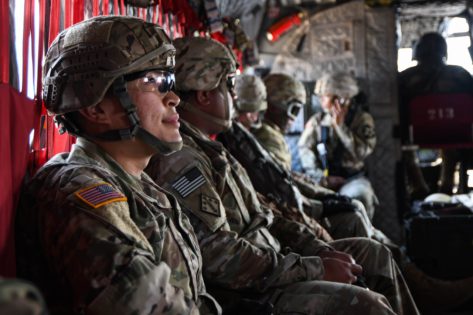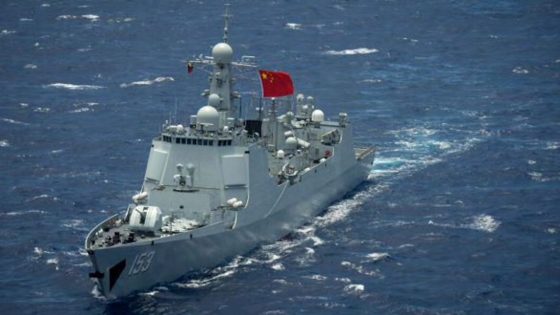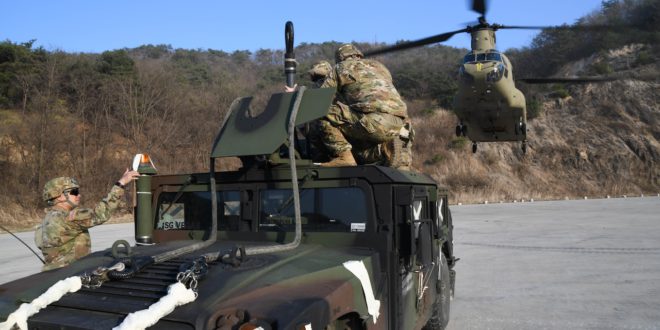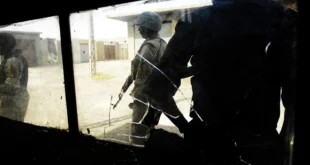
For Contingencies in Indo-Pacom, Army Will Serve as ‘Linchpin’ for Joint Force
DEC. 1, 2021 | BY C. TODD LOPEZ, DOD NEWS photos By: Army Spc. Brooke Davis
While the U.S. was involved for 20 years in the Middle East with conflicts in both Iraq and Afghanistan, the Chinese military studied how the U.S. military operates and also embarked on its own large-scale modernization effort.
“A more powerful Chinese military helps to underwrite Beijing’s strategy to achieve the ‘great rejuvenation of the Chinese nation’ by 2049 — to include development of the PLA [People’s Liberation Army] into a ‘world class military’ by midcentury,” Secretary of the Army Christine Wormuth said during a conversation today with the Center for Strategic and International Studies.
“China’s focus on modernizing its military capabilities will strengthen its ability to coerce Taiwan and rival claimants in territorial disputes, project power globally, and counter interventions along the PRC’s [People’s Republic of China] periphery,” she said.

Right now, the Chinese military is manned with about two million service members — 975,000 of them in army combat units. It also has the most ships of any navy in the world, Wormuth said. And within the Indo-Pacific region, the Chinese military also has the largest air force.
China now has the ability to attack U.S. sensors and communication links in space and also has missiles that can sink U.S. ships and take down aircraft, Wormuth said.
“They have missiles that can reach U.S. bases in Japan and Guam, exposing our planes and runways to attack,” she said. “Not only does China have advanced precision weapons, it has them in large and growing quantities. And just recently, China conducted a missile test that sent a missile around the world, dropping off a hypersonic vehicle that glided all the way back to China where it then struck a test target.”
Considering the advancements made by the Chinese military and the challenges it poses to the U.S., Secretary of Defense Lloyd J. Austin III has identified China as a “pacing challenge” for the Defense Department.
The entire U.S. military must be prepared to meet that pacing challenge, Wormuth said, but as the secretary of the Army, she laid out capabilities she thinks the Army will be able to bring to that joint effort.
“In my view, the Army will have at least five core tasks if a conflict breaks out, and these are tasks the Army can usefully perform without presuming substantial expansion of Army permanent presence in the region in the near term future,” Wormuth said.
First, she said, the Army will serve as the ‘linchpin” service within the joint fight.
“The Army will establish, build up, secure and protect staging areas and joint operating bases for air and naval forces in theater,” Wormuth said. “We will be prepared to provide integrated air and missile defense, both for fixed sites and using mobile elements. We will provide area security and quick reaction forces where needed.”
The Army will also use its vast logistics capacity to sustain joint force partners across the Indo-Pacific region, she said.
“The Army, for example, will provide much of the secure communication network background. We will generate intra-theater distribution networks to keep the joint force supplied from dispersed locations, and we will maintain munition stockpiles and forward arming and refueling points,” she said.
The Army can also provide command and control capability at multiple levels to ensure coordination and synchronization across the joint force.
“The Army, with its substantial planning and operations capacity at the division and corps level, is uniquely well placed to provide command and control for the joint force,” Wormuth said.
Beyond just mission support, Wormuth also said the Army brings substantial combat capability to the joint force. For instance, she said the Army will provide ground-based, long-range fires to enhance the joint force’s strike capability.
“Using our long-range hypersonic weapons, mid-range capability and precision strike missiles — all of which we will begin fielding in fiscal year 2023 — we will be able to interdict fires across sea lines of communication, suppress enemy air defenses and provide counter fires against mobile targets.”
Finally, she said, the Army can provide counter-attack capability using its maneuver forces. Infantry stryker elements or combat aviation brigades, for instance, can be used to restore territorial integrity of allies and partners.
While Wormuth said the Army is currently capable of providing such capabilities to the joint force without changes in its existing permanent presence in Indo-Pacom, some changes would be useful. Right now, the U.S. military footprint in Asia is oriented towards the northeast, in places like Japan and Korea, for instance.
“I think there is very much a desire to be able to expand our access and basing arrangements more into Southeast Asia; because, if we were able to do that, we would have … a more dispersed posture that would give us much more flexibility,” she said. “I think it is very much in our interest, and in the interest of our allies and partners, to explore how we can shift that posture over time.”
Nevertheless, considering where the U.S. operates now in Asia, she said it’s important to maintain realistic assumptions about where the U.S. will be operating from, at least in the near future.
“The Indo-Pacific … is a region of great opportunity for the United States, but also real challenges,” she said. “The Army is stepping up to that challenge, both in terms of how we contribute to the country’s ability to compete with China and our ability to deter coercion and aggression in the region.”
 Soldier of Fortune Magazine The Journal of Professional Adventurers
Soldier of Fortune Magazine The Journal of Professional Adventurers






